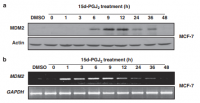@Travis
Based on the general interpretation of your much appreciated and extensively supported theory, would you agree with this list of general applications (feel free to add or remove any applications):
-avoid PUFA/ toxins in the diet by focusing primarily on ruminant based meats (beef, lamb, goat), non-allergenic dairy sources, shellfish (shrimp, oyster, mussel, scallop), fruits, honey, maybe a carrot
-avoid excessive stress from pyshcological mediums (toxic relationships, poor employment situation), chronic cardio, lack of sleep, lack of light exposure, lack of meaningful human interaction and other emotional mediums (perhaps practice meditation and letting go to manage the unavoidables)
-optimization of colonic flora, specifically in the context of its immune regulating and t-cell interaction (starch avoidance, synthetic gums avoidance, grain avoidance, no high fiber diet, etc.)
-supplementation of vit D3 to maintain adequate blood levels, K2-Mk4, perhaps some topical magnesium chloride. Obtain calcium from dairy, vit a from liver, zinc from oysters
-regular use of aspirin and perhaps vit e to possibly control the prostaglandin situation if the body is loaded on linolate.
-elimination of any hidden chronic infections.
(For other people reading almost every single one of these points have been discussed by Peat or others on the forum in some degree. Even though these things are being talked about in this context of hairloss I think these are generally applicable to almost all health situations and conditions with each manifestation perhaps being a predisposed variation of the same general etiology.)
Thanks for your time and research @Travis, I have been following ur posts since u posted on the "Cause of baldness thread"; very nice work although some is beyond my current knowledge base. I very much appreciate it. I havent seen work like this anywhere else on the internet. Most researchers seem to be pigeon- holed into one very discrete area of research and the civilian scientist on the forums are looking into different permutations of the same general theories endlessly.
I agree to almost everything on your list (and Peats work in general), but I think one should in addition to your list also keep carbs under 100/g per day (maybe even 50 g for some people), eating good amounts of butter and cocunut oil, once in a while water fast for a couple of days and also meditating or going for long walks daily. :)
As you say this is for health in general.


